Pilgrimage: Palazzo Ducale
A visual feast in Northern Italy: splendor, beauty, and more painted ceilings than you can imagine
A 1,000-room palace in the beautiful city of Mantova—with all of the magic of Northern Italy’s most beautiful medieval Renaissance cities and none of the crowds.
What is it?
Grandiose architectural complex built by Mantova’s ruling Gonzaga family, who lived in the palace from 1328 to 1707 and tasked Italy’s most revered Renaissance artists with painting frescoes, sculpture and chiseling marble for endless halls, ballrooms, bridal chambers, secret rooms, and interior gardens—room upon room stuffed with magnificent treasures. Tapestries by Raphael, frescoes by Mantegna, Il Grechetto’s most significant work on canvas, and more painted ceilings than you could ever, ever imagine.
After a difficult week, it’s a fortifying reminder that once the vestiges of an all-powerful, long-running dynastic government have long disappeared, the massive Palazzo Ducale—full of frescoes, statuary and soul-stirring artistry—still stands. It’s the art and beauty that has persevered, outlasting the powers that brought it into being more than 500 years ago.
Where is it?
About two hours from Milan and an hour and a half from Bologna, the city of Mantova, surrounded by three artificial lakes (functioning as a super-sized moat back in the day), is a medieval Renaissance city with insanely beautiful architecture everywhere you look and a decidedly real-life local vibe.
Why go?
Because every inch of its 365,000 square feet—and 1,000-plus rooms—is a complete work of art. Because the Bridal Room’s painted oculus is considered among the most beautiful ceilings (and most convincing trompe l'oeil) in the world. Because the palace—the 6th largest in Europe—is every bit as beautiful as the Sistine Chapel, I swear it. Michelangelo has nothing on Andrea Mantegna, and there’s no queue to sludge through or throngs of tourists jostling over viewing space. And this is perhaps the biggest draw of all: to stand quietly in one of the overwhelmingly great halls, taking in every detail in the privacy of your own thoughts, awestruck and remarkably alone. I mean, most rooms don’t have even an attendant.
TOP SMALL MOMENTS / FAVORITES
—The wooden labyrinth ceiling painted by Bartholomaus Dill Riemenschneider with the words “Forse che sì forse che no.” Maybe yes, maybe no.
—Discovering one of the halls with all the busts removed, lined up in a row down the long corridor for cleaning
—Standing directly under the oculus in the bridal chamber and looking up. Considered the masterpiece of the entire palace.
—For kids (or adults) into Greek mythology: the beautifully carved sarcophagus of Hercules' 12 labors is an incredible ancient Roman frieze.
—The incredible collection of colorful, fantastical ceramics made for the palace
—The Room of the Zodiac with its astronomical fresco featuring the heavenly Diana and Astraea, with Diana’s chariot pulled by dogs through the constellations. Painted by Lorenzo Costa the Younger, an early dabbler of Mannerism known for breaking the formal constraints of Renaissance art. Originally Guglielmo Gonzaga’s bedroom; the canopied bed in the corner belonged to Napolean, who crashed in this room during the Napoleonic Wars. It’s so beautiful, I had to double-back a couple times for a repeat gawking session.
MORE GIULIO ROMANO
Renaissance artist and architect Giulio Romano, a student of Raphael, is the great artistic hero of Mantua. You can’t go anywhere without being reminded of his imprint on the city. After his work in Ducale, he was commissioned by Federico II Gonzaga to design and decorate the Palazzo Te—the stunning and eccentric Mannerist villa/pleasure palace—namely, a place for Federico to meet with his mistress across town. The official, less explicit explanation: “The purpose of the building is clearly expressed in an inscription in the chamber of Psyche: this is a Palazzo for free time and enjoyment, for the honest leisure of the prince, whose energy is restored amid the peace and calm.” The “honest leisure” part really amuses me.
FOR YOUR NOTES
—Getting around: Arrive by train or car (the former connects directly from Milan, Verona and Bologna), then walk everywhere.
—Where to stay: It could only be here: Covered in frescoes, this beautifully restored apartment is just outside the tourist area but still walkable to everything.
—Where to eat: Restaurants in central Italian squares are often where you’ll find the most touristy restaurants in town. Not so in Mantua. On Via Trieste in the shade of the clocktower, Osteria dell’Oca is full of locals who often wander around, greeting friends at other tables. Make sure to stop by one of the city’s traditional bakeries (Panificio) for a slice of traditional sbrisolona—a buttery crumbly Mantuan cake that dates back to Gonzaga times. After dinner is too late; go in the afternoon, while there’s still something left in the case.
—What else? Designed by Antonio Galli Bibiena in 1767, the Teatro Bibiena, known for its sublime gold and wooden interior, is where a 13-year-old Wolfgang Amadeus Mozart, performed during his first Italian tour with his father in 1770, just a few days after the theatre opened.


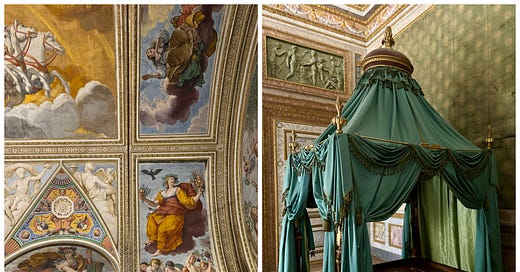

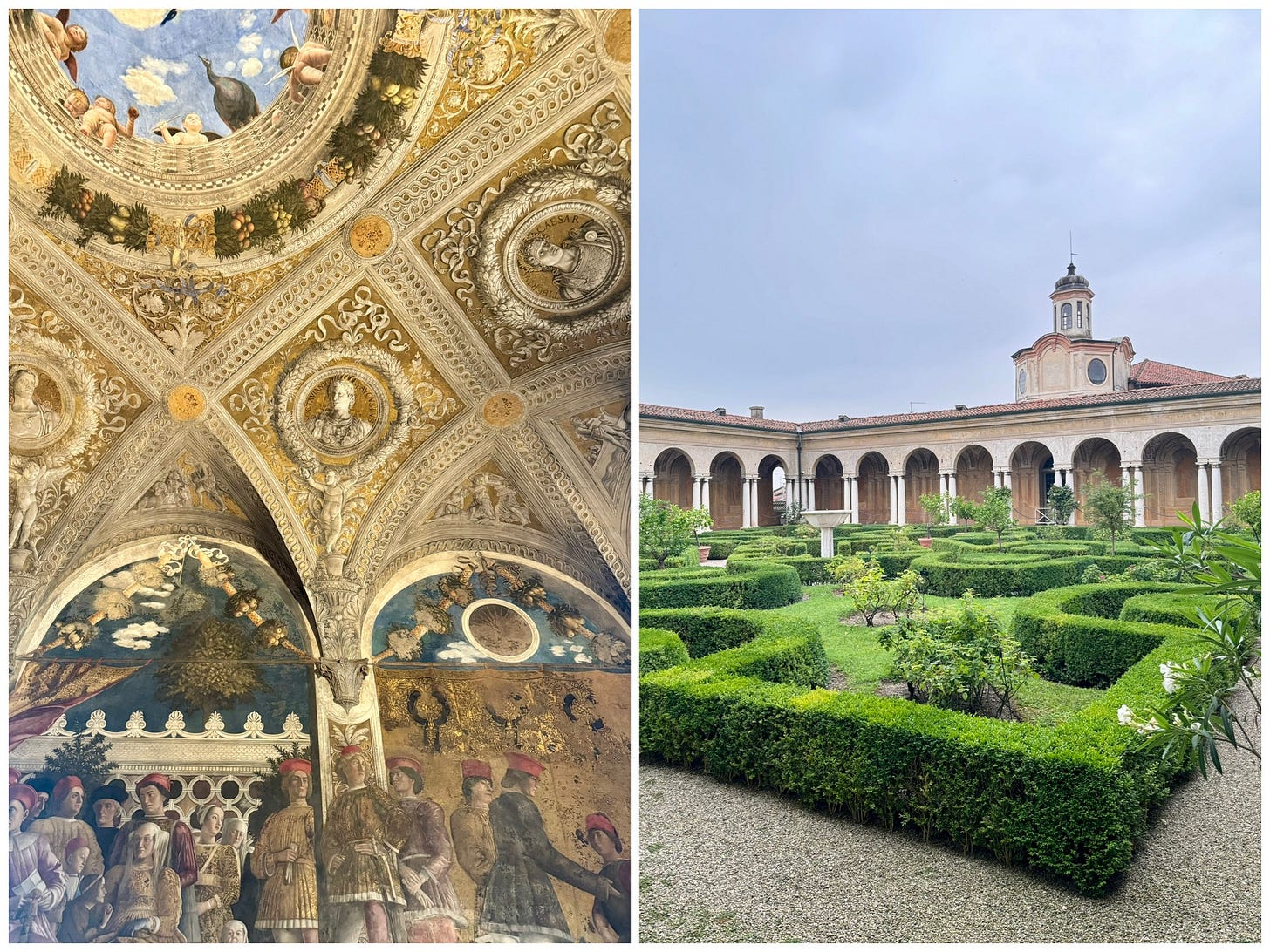

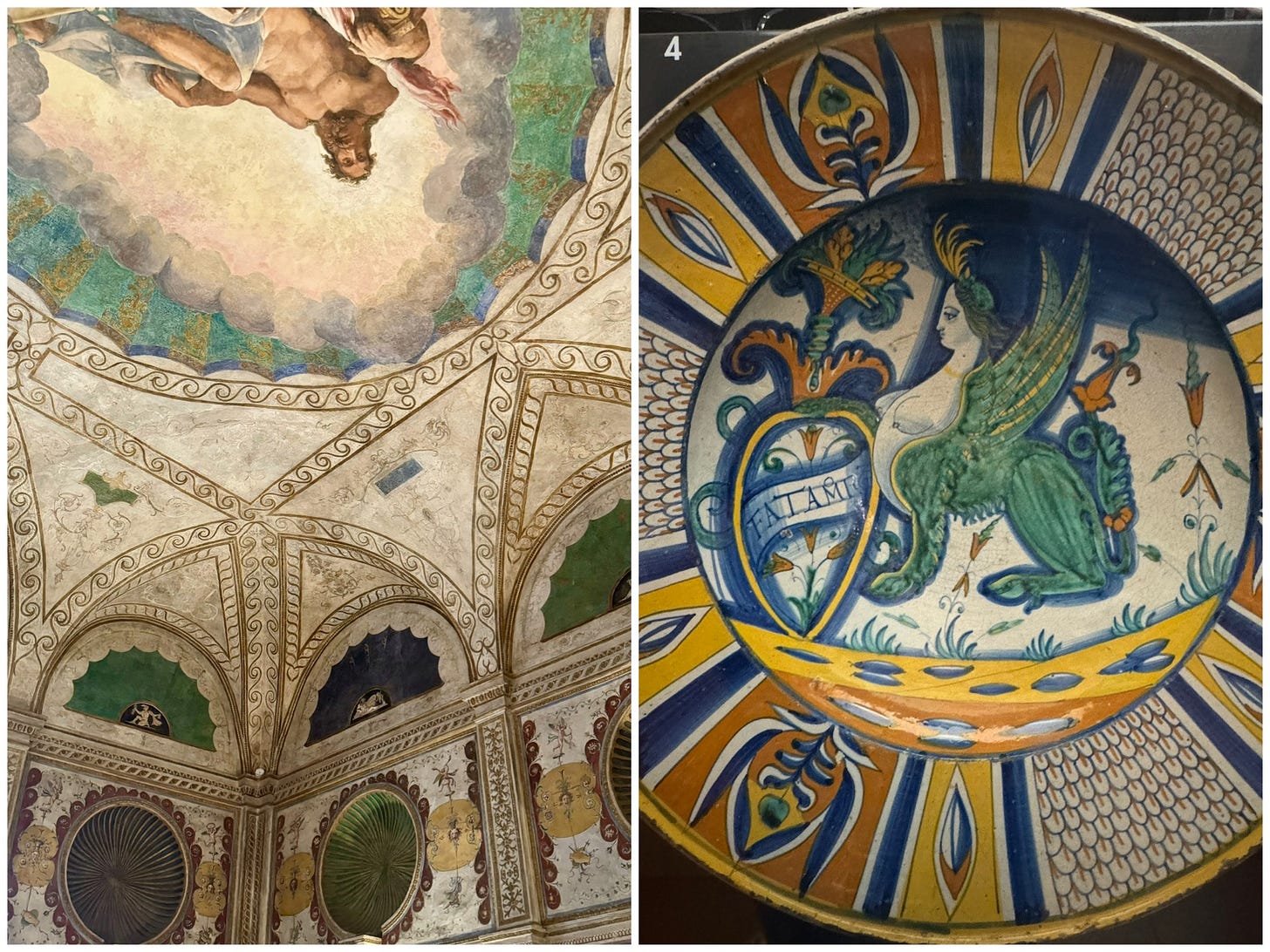
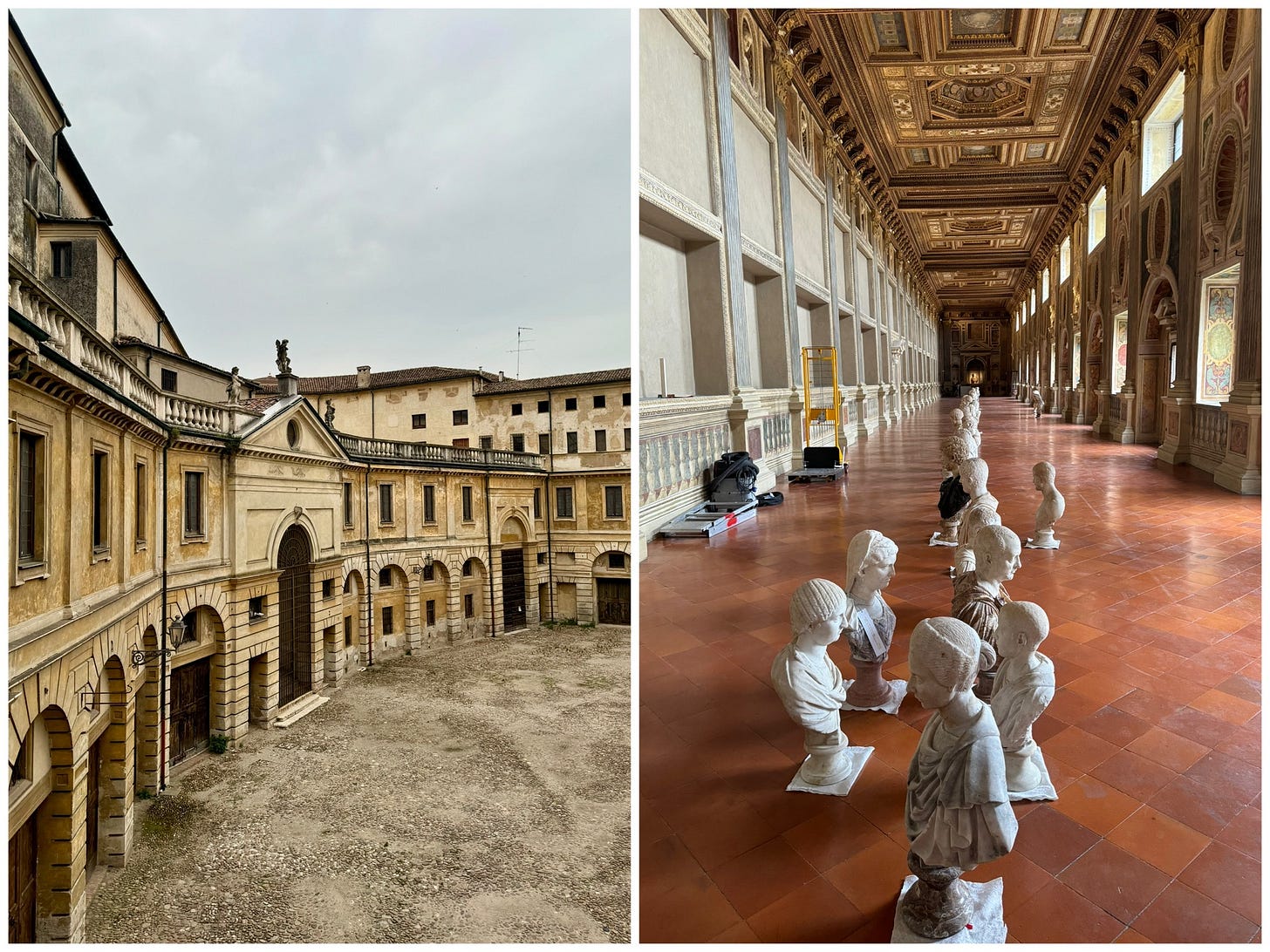

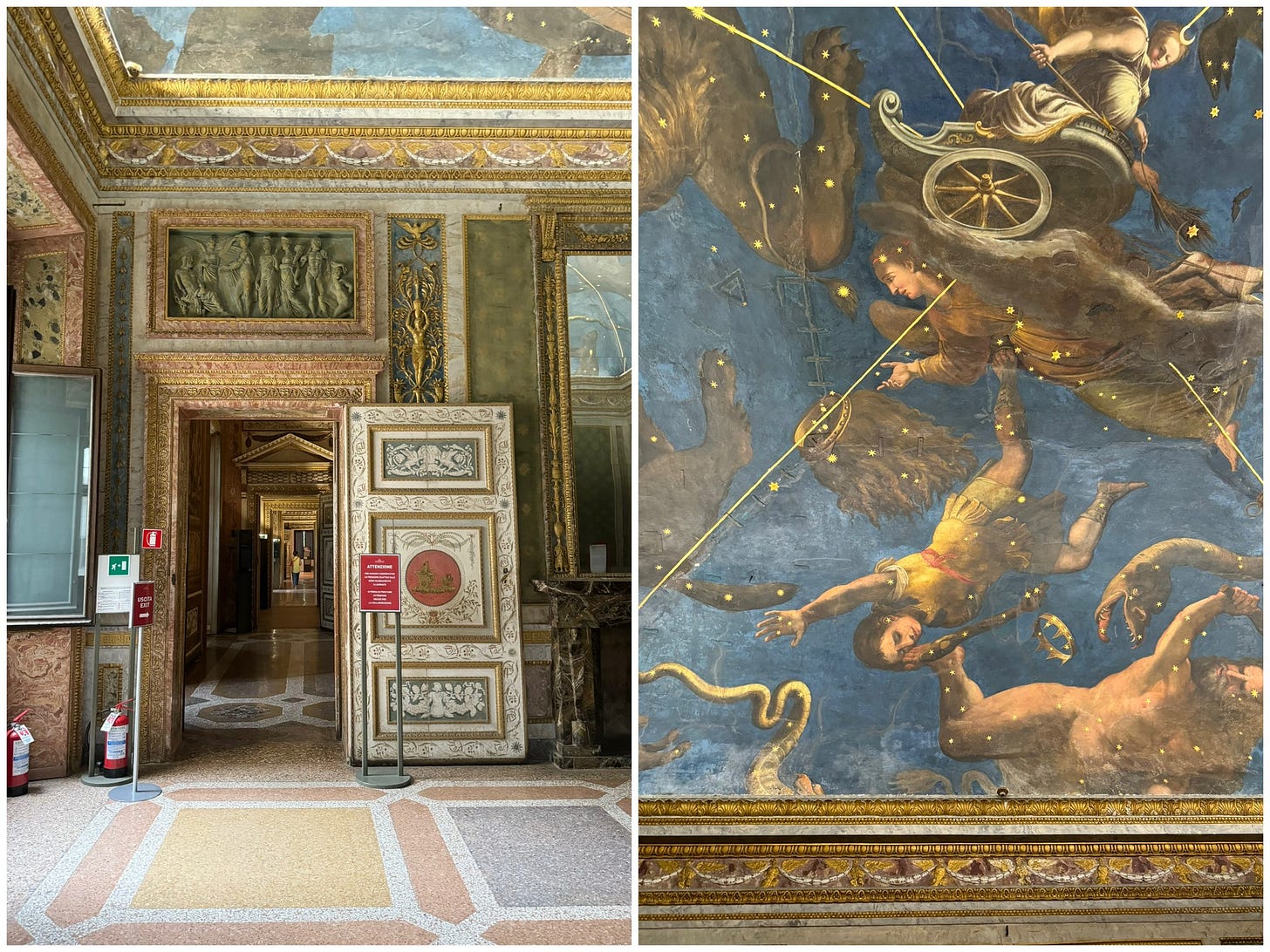
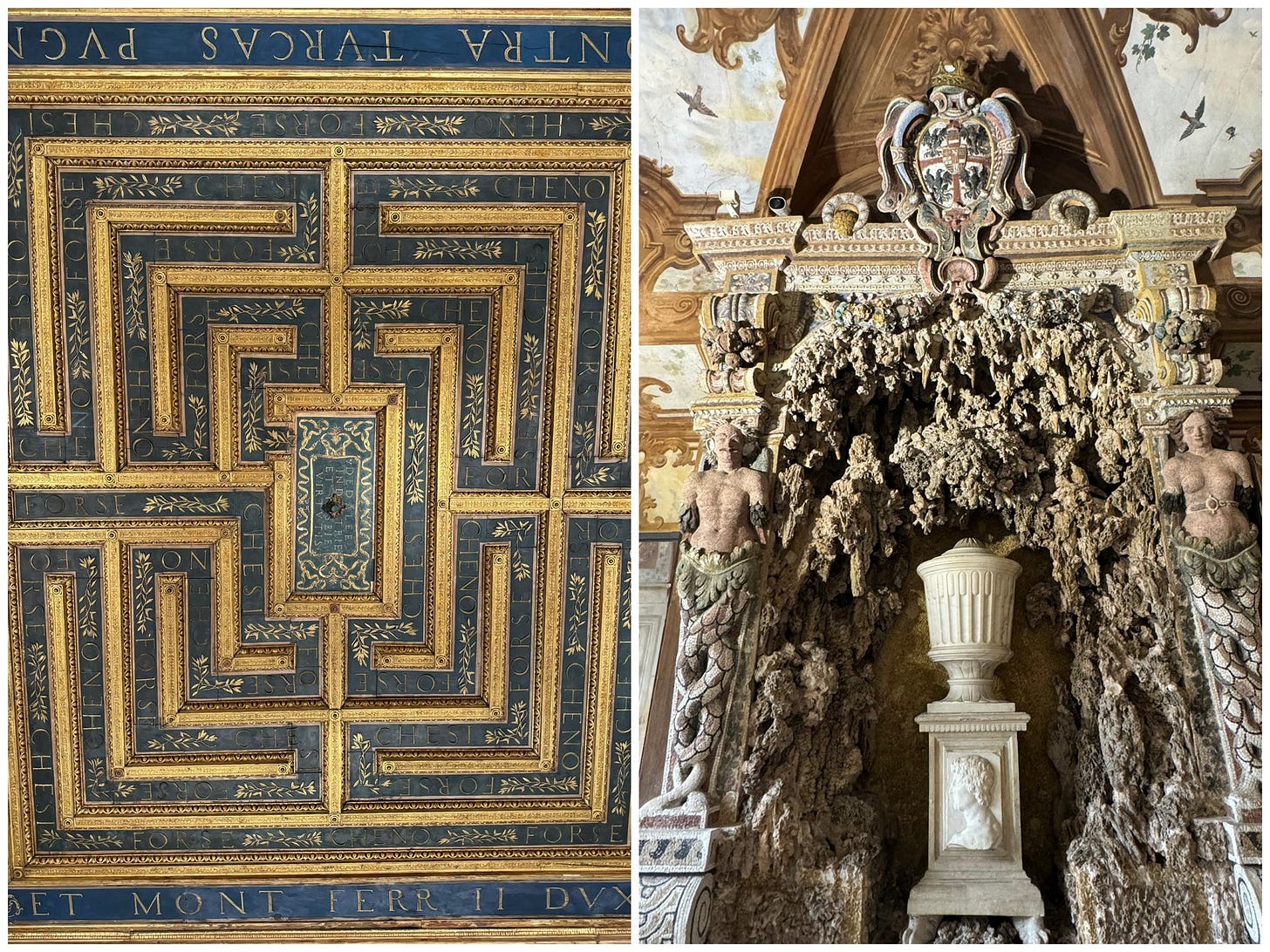
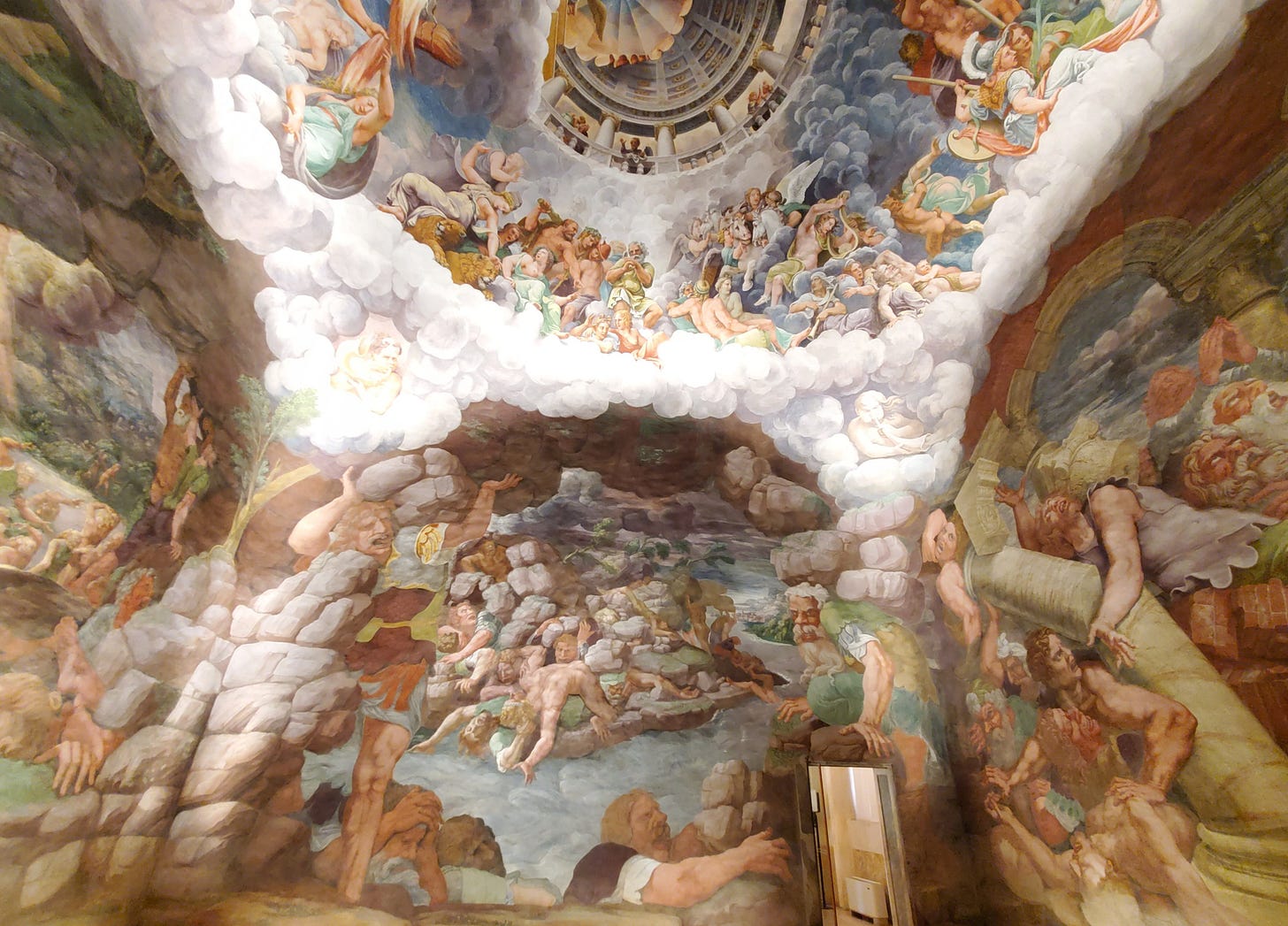
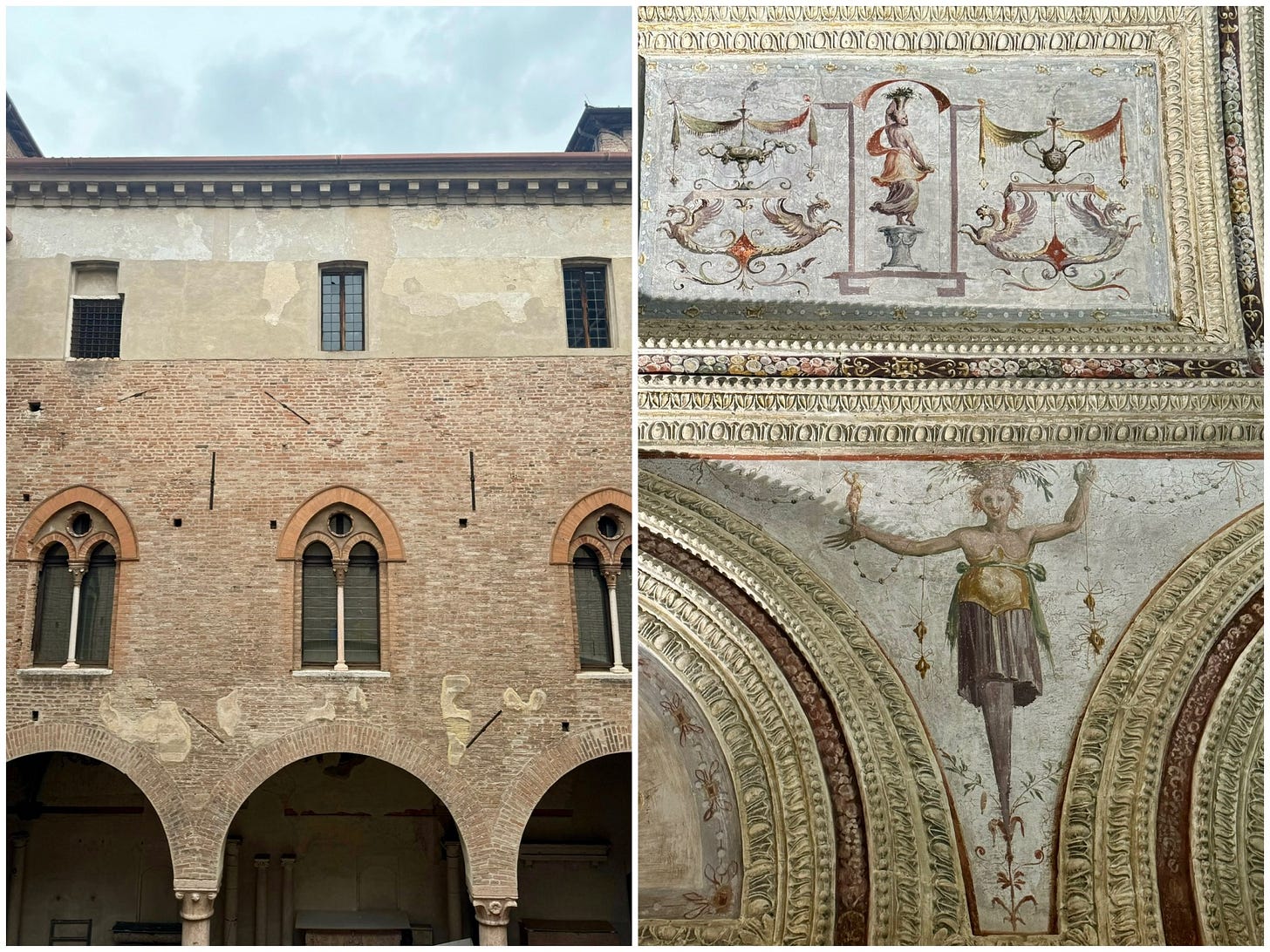
What a treasure!! Loved this little bit of escapism. Thank you for sharing your pictures and writing for free :)
Great writing about a great place! 👍